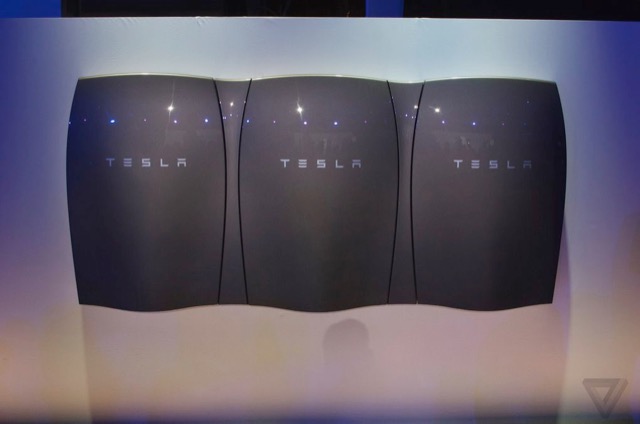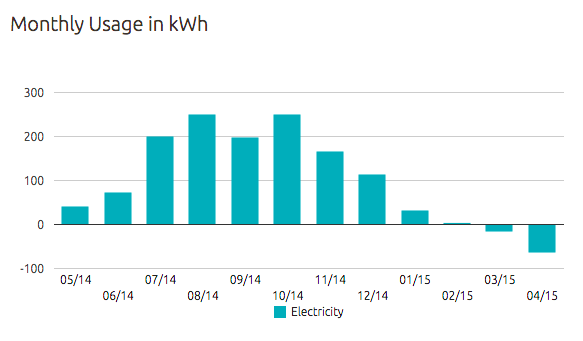Does a Tesla Powerwall Make Sense in Hawaii?
I’m intrigued by all things Tesla including their newest product, the Powerwall. The Powerwall is essentially a Tesla battery installed in the home to store excess power which can then be used later like during a power outage. Additionally, the Powerwall can charge itself when electricity rates are cheaper and then provides power to your home to avoid high cost peak times. But since Hawaii doesn’t tier its electricity rates for residences, that downplays a big feature of the Powerwall.
Couple the Powerwall with PV solar and the situation becomes more compelling. Assuming you don’t have enough solar panels to “zeroize” your electricity bill then the Powerwall could store excess electricity produced by the sun and when your home’s power consumption increases, the Powerwall provides the free power rather than getting it from (and paying) HECO.
But is this worth the $3000-3500 price tag of a single Powerwall (not including installation and other ancillary equipment)? I don’t know if there are tax considerations. More than one Powerwall can be interconnected by the way if you’re trying to live off the power grid.

Supposedly, Hawaii has the highest electrical rates in the country, and the U.S. Energy Information Admininstration says the average American home consumes about 11,000 kWh per year or about 30 kWh per day. This equates to getting three 10 kWh Powerwalls for $10,500 to store enough power daily (generated from solar) and remove your home from the commercial power grid.
Looking at my power usage (and assuming I’m doing the math right), it looks like my household averages usage of 4.3 kWh per day for months that we get power from HECO. That’s far short from the estimated 30 kWh for an average home. Anyways, with that 4.3 kWh daily usage, the 7 kWh Powerwall unit for $3000 should suffice and with room to spare.

But looking at my HECO bill, my solar panels don’t generate enough to juice up the Powerwall. So I’m not sure how it works. Do you initially charge the Powerwall using HECO and solar. Then when charged, your house draws from the Powerwall first then when depleted falls back to HECO? If that’s the case, I should be good shape with my daily average of 4.3 kWh. I would have to see the solar production numbers to verify that it can keep up that 4.3 kWh depletion. Then in theory, I would be paying the minimum monthly bill to HECO (after that Powerwall charge up).
Looking over one year’s worth of electricity bills and factoring out the roughly $18 minimum bill, I’d be saving around $360 in one year. So roughly, that equates to a 10 year return on investment?? The Powerwall does include a 10-year warranty with optional 10-year extension. Having power when the grid goes down (which seems to happen at least once a year for us) is a benefit although the 7 kWh Powerwall wasn’t designed for this (that’s the intent of the 10 kWh model but assuming only capacities differ, I’m guessing the smaller unit can serve as a power backup for a home).
Again, I’m not sure if my rough calculations are on track. But looking at my power usage, there seems to be enough benefits for Tesla’s Powerwall – paid off in about ten years (under warranty), not relying on HECO (as much), and having power during blackout and brownouts.
September 26, 2015 @ 10:49 am
A Powerwall doesn’t produce any power, Sri if your solar panels don’t produce enough power, that won’t change. Your bill will not go down, and the Powerwall will not save you any money if you already have a net metering agreement. Don’t listen to the salesmen on this one, it doesn’t make any sense for you (or me). Being off the grid would be cool, but that’s a whole different proposition.
February 9, 2016 @ 1:09 am
A couple thoughts … first, if the utility becomes unreasonable, this would allow you to potentially bypass having to deal with them. Second, should there be a loss of power due to hurricane, earthquake, etc this allows you to function off the grid. So long as your PVC system is producing excess power through the day, the difference can go into this battery. Assuming you charge it adequately and your power needs go down at night, you’d essentially be off grid. My big question, is this tax deductible?
February 14, 2016 @ 10:39 am
For the benefits alone, I think the cost is worthwhile 🙂
March 10, 2017 @ 4:23 pm
The only thing that really makes sense is to simply go off grid and put the savings in your pocket every month and expand your own grid at will or when needed. I prefer using AGM and golf cart batteries, they seem to be very forgiving and long lasting if you incorporate pulse/desulfurization chargers. I was never a fan of HECO, net metering nor connecting to a grid that can go down with any tsunami or hurricane,based on the locations of all of the electric generation plants on the island of Oahu. Not only that,when the grid goes down,so does your power also and get this,you have the solar panels on your roof. The upside, it costs less than $10k to go off grid vs the $50k-$90k to connect to the grid. I am hoping that common sense prevails here…
March 15, 2017 @ 9:46 am
I am trying to get off the grid – do you have any insights of where to start now that we have all of these options?
March 15, 2017 @ 10:59 am
Actually, I do. Start by ordering 12 v 100 w solar panels from eBay, Amazon Prime or anyway you can get your hands on panels. Any larger panel, you’ll pay through the nose for shipping, they run me about $1.19 a watt right now. You don’t have to buy them all at once, you can buy little by little each month. Then start buying 6v & 8v golf cart batteries from Sam’s Club or Costco and connect them in series/ parallel circuit so that you end up with a 14v system. Then you can shop on eBay for D.C. To AC inverters and hardware them into your electrical box, I find a separate box works better so that you can build up your system as you go along. Later on, you can add wind turbines & pulse/ desulfurization chargers to keep the insides of your battery banks clean & last for decades. The reason I designed two of my four battery banks into 14v systems is because 12v systems alarm out your inverters after about 4-5 hours and 14v don’t alarm out my inverters at all. You get about 14-19 hours before they alarm out the inverters if there was no sunlight at all. Plus all of my radios operate at 13.8 volts, so 14v systems make more sense to me. I hope this helps.